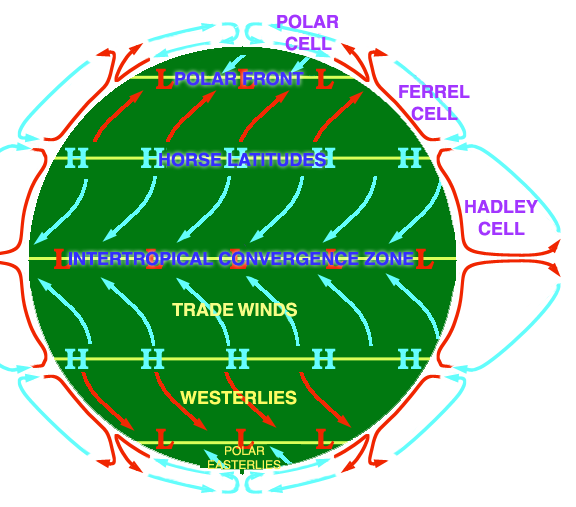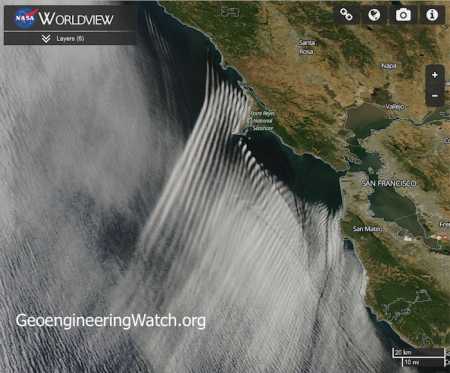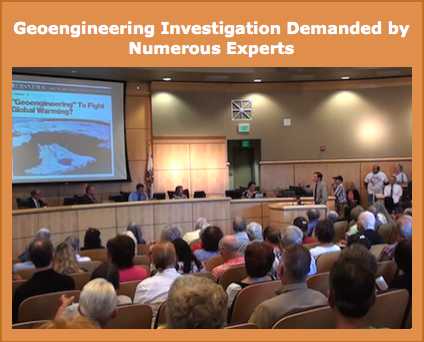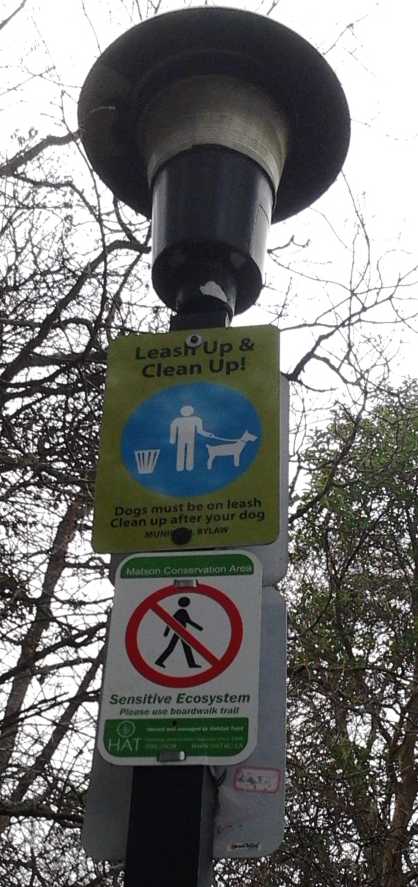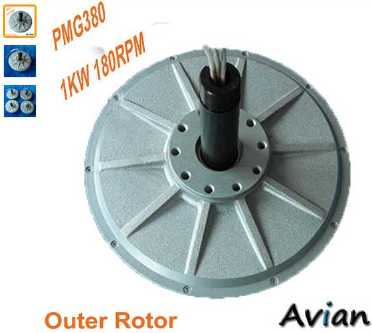
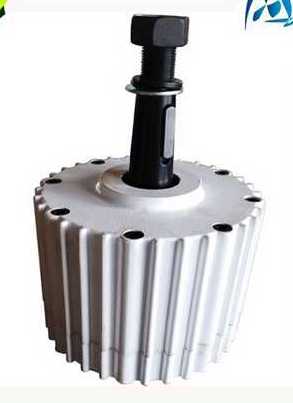
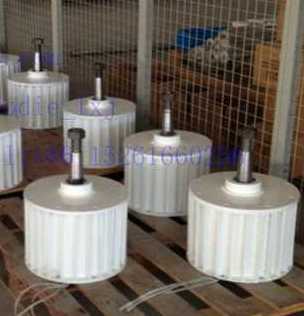
"Coreless" 5KW, 1KW, 5KW commercial low RPM alternators
| Name |
Power (KW) |
@ RPM |
O.D. (mm) |
Length (excl. shaft, mm) |
Weight (Kg) |
Price (Canadian $) (Incl.delivery) |
| "Coreless" |
5 KW | 100 |
710 |
150 |
135 Kg |
8100 |
| Model G-1000 |
1 KW |
450 |
185 |
190 |
17 Kg |
810 |
| Model G-5KW |
5 KW |
300 |
233 |
285 |
85 Kg |
3043 |
| Improved Piggott (coreless, 1 stator/2 rotors) |
2+ KW (est.) |
1000 |
356 |
110 |
16 Kg |
? |
| Improved Piggott (coreless, 2 stators/3 rotors) |
4+ KW (est.) |
1000 |
356 |
140 |
21 Kg |
? |



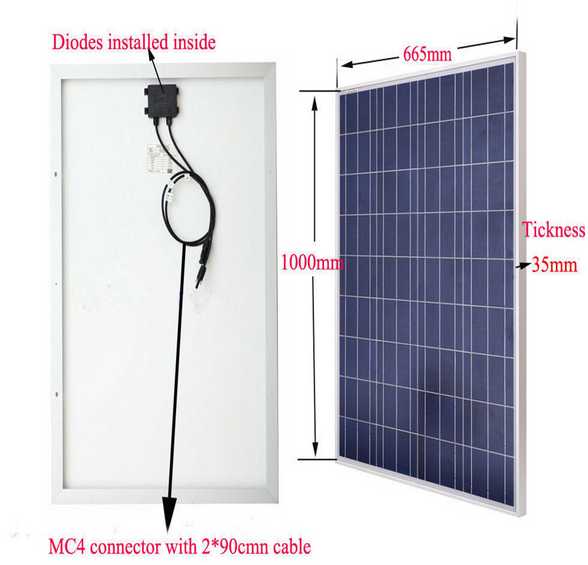 In looking for
solar PV cells on AliExpress.com for the
"pebbled" solar panel glazing project, I also
ran across 100 W panels (18 V intended for charging 12 V batteries) for
~142 $C ("35% off"), "free shipping". They were a little smaller than
others of that
rating, and I
ordered 5 for the roof of the Miles electric truck. I may never need to
plug it in in the summer if it's sunny! They arrived in about 12 days,
and seemed so nice I ordered another 6. With a roofrack, 3 would fit on
the Sprint roof to charge should the project ever be completed. The
other 3 I could probably sell up north complete with charge controllers
at a
profit. To
facilitate that, I looked for a typical 10 amp lead-acid battery charge
controller, and found some for ~15 $C at a store called "Yoosmart"
which also seemed to be called "BigStoreHK".
In looking for
solar PV cells on AliExpress.com for the
"pebbled" solar panel glazing project, I also
ran across 100 W panels (18 V intended for charging 12 V batteries) for
~142 $C ("35% off"), "free shipping". They were a little smaller than
others of that
rating, and I
ordered 5 for the roof of the Miles electric truck. I may never need to
plug it in in the summer if it's sunny! They arrived in about 12 days,
and seemed so nice I ordered another 6. With a roofrack, 3 would fit on
the Sprint roof to charge should the project ever be completed. The
other 3 I could probably sell up north complete with charge controllers
at a
profit. To
facilitate that, I looked for a typical 10 amp lead-acid battery charge
controller, and found some for ~15 $C at a store called "Yoosmart"
which also seemed to be called "BigStoreHK".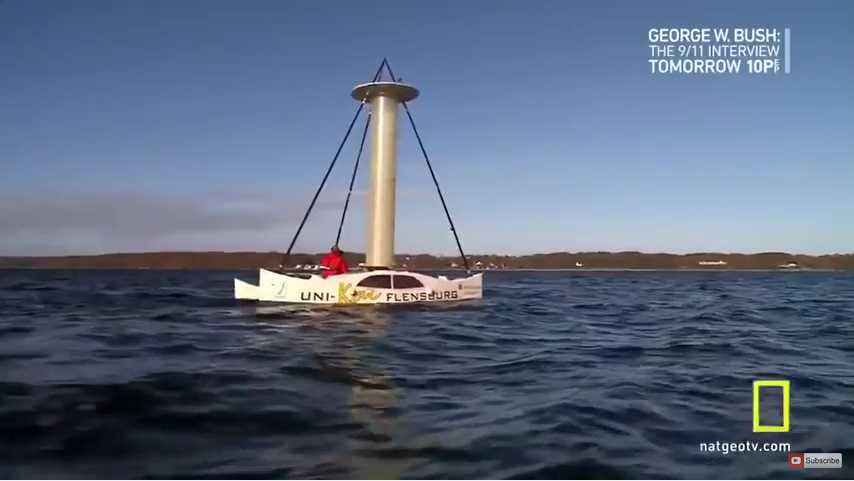 In
a 2011 documentary I saw about geoengineering (URL below in In
Passing),
there
was a bit of a sideline about wind powered boats that have some
sort of vertical axis wind turbine instead of a sail. Apparently the
first ship with two spinning towers was made by one Fletcher(?) in
Flensburg, Germany
in 1925, which proved the concept. Here is a small catamaran version,
also from Germany. It seems to move along at a good clip when there's
wind.
In
a 2011 documentary I saw about geoengineering (URL below in In
Passing),
there
was a bit of a sideline about wind powered boats that have some
sort of vertical axis wind turbine instead of a sail. Apparently the
first ship with two spinning towers was made by one Fletcher(?) in
Flensburg, Germany
in 1925, which proved the concept. Here is a small catamaran version,
also from Germany. It seems to move along at a good clip when there's
wind.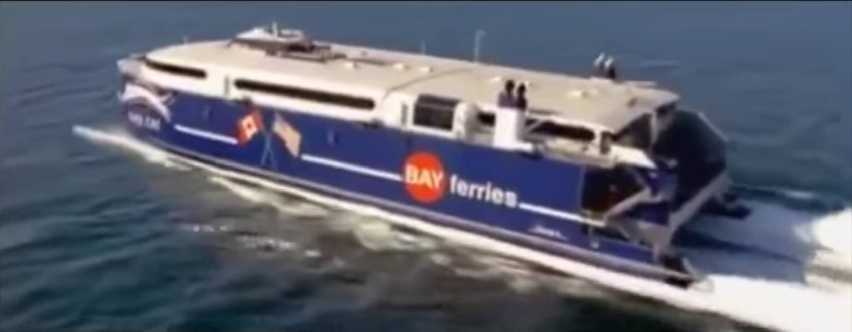 After chancing
on a "Mega Machines" youtube video about "The Fastest Ferry
in North America" (up to 90 KmPH/55 MPH), I started considering such
fast catamaran ferries, perhaps powered by BC natural gas, for Haida
Gwaii, which is presently quite isolated owing to long travel times for
ferries and costly small plane flights. The 91 meter advanced Cat, made
in Tasmania, Australia, would greatly improve travel times on the long
northern
ferry routes. Building a boat to handle 3 meter tall waves
without people staggering about, or even in this ferry's case not even
have
food and drinks slide off a table or spill while traveling at 75 KmPH
through those waves (while carrying 200 vehicles), it has to be Far
larger than anything I could attempt to build. So I recommended that
the BC government buy one for BC Ferries. But from the reply it didn't
sound like anything was going to happen.
After chancing
on a "Mega Machines" youtube video about "The Fastest Ferry
in North America" (up to 90 KmPH/55 MPH), I started considering such
fast catamaran ferries, perhaps powered by BC natural gas, for Haida
Gwaii, which is presently quite isolated owing to long travel times for
ferries and costly small plane flights. The 91 meter advanced Cat, made
in Tasmania, Australia, would greatly improve travel times on the long
northern
ferry routes. Building a boat to handle 3 meter tall waves
without people staggering about, or even in this ferry's case not even
have
food and drinks slide off a table or spill while traveling at 75 KmPH
through those waves (while carrying 200 vehicles), it has to be Far
larger than anything I could attempt to build. So I recommended that
the BC government buy one for BC Ferries. But from the reply it didn't
sound like anything was going to happen.| Route |
Present ferry Travel Time, vehicles carried |
Advanced Catamaran Ferry |
| Prince Rupert <---> Skidegate (Haida Gwaii) |
7 hours, around 100 vehicles |
2-1/3 hours, around 200 vehicles |
| Port Hardy (Vancouver Island) <---> Prince
Rupert |
18 hours, ~100 |
8 hours, ~200 |
